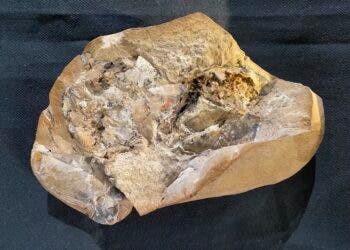
A team of surgeons in the US has found two almost uncanny ways to rescue hearts that have stopped beating, and repurpose them into life-saving organs for transplant. One of these techniques recently helped save a 3-month-old baby from dying, and the other gave new life to three heart patients.
The researchers claim that both these methods could drastically increase the number of hearts available for transplant, especially for children.
Unfortunately, each year, about 500 children die in the US while waiting for a new heart. This is because until now, doctors could mostly use hearts from donors who were brain dead but whose hearts were still pumping. These strict conditions meant very few hearts are qualified for transplant.
However, using the heart reanimation and heart resuscitation procedures, doctors may soon be able to use many more hearts from donors who die after their circulation stops, a category called donation after circulatory death, or DCD.
Bringing a dead heart back to life
In traditional transplants, organs are removed from brain-dead donors, people who have permanently lost all brain activity but are kept on life support to keep their organs healthy. However, this excludes a large number of potential donors, especially babies and young children.
DCD donors, on the other hand, are people whose hearts and circulation have completely stopped after life support is withdrawn. Once the heart stops beating, it begins to deteriorate quickly due to a lack of oxygen, making it risky or impossible to use for transplant. What’s worse, heart tissue is particularly vulnerable, and machines that keep adult hearts alive outside the body don’t work for small infant hearts.
To overcome this, two teams of surgeons, one at Duke University and the other at Vanderbilt University Medical Center (VUMC), tested two different techniques that could preserve and even restart hearts after circulatory death, all while avoiding the ethical concerns that have plagued earlier methods.
At Duke, pediatric surgeons designed a special circuit, much smaller than adult devices, to bring an infant’s heart back to life on a surgical table. After a month-old donor passed away and the heart stopped for more than five minutes, doctors removed the tiny organ and placed it in a system that pumped warm, oxygen-rich blood through it.
Surprisingly, the heart soon woke up, began beating again, and was then cooled down and stored for transport. Just two hours later, it was successfully transplanted into a 3-month-old recipient, who was healthy and showing no signs of rejection six months after surgery.
“We describe an on-table reanimation of a pediatric DCD heart transplanted into a 3-month-old recipient,” the study authors note.
This approach could open the door to up to 100 more pediatric transplants each year in the US alone, according to the Duke team.
The other way to recover the heart
At Vanderbilt, a different approach was taken. Instead of trying to restart the heart, the surgeon developed a preservation method called REUP (recovery with extended ultraoxygenated preservation).
In this method, after the donor’s heart had stopped, they inserted a syringe into the aorta and filled it with a cold solution rich in oxygen, red blood cells, vitamins, and other protective ingredients. This helped flush out harmful waste and preserved the tissue without making the heart beat again, which sidesteps a major ethical issue.
This is important because some doctors and ethicists worry that restarting a heart inside a donor’s body, a method called normothermic regional perfusion (NRP), might accidentally send blood to the brain and blur the legal definition of death.
The REUP method avoids this entirely, because the heart is never restarted, and blood is directed only to the heart.
“We’re not reanimating the heart, we’re resuscitating it,” Aaron Williams, lead researcher and a heart surgeon at Vanderbilt University Medical Center (VUMC), said.
In their early tests, the Vanderbilt team successfully transplanted three hearts preserved this way. All recipients recovered well, with no signs of organ rejection six months after surgery.
“In the first three reported cases in which this method was used, the hearts were transplanted successfully with normal biventricular function, no evidence of acute cellular or antibody-mediated rejection, and excellent early postoperative outcomes. No adverse events were reported during the perioperative period,” the Vanderbilt team notes.
Making hearts more accessible
These new methods offer practical, affordable, and ethically cleaner ways to bring more donor hearts into the transplant pool, especially from infants and children, where the shortage is most severe. They also reduce dependence on expensive machines or controversial procedures like NRP.
However, there are still challenges ahead. For instance, in the REUP method, doctors don’t actually see the heart beating before transplant, so they must trust that the preservation worked, which could be riskier for older donors or in cases with longer waiting times. On the other hand, while Duke’s on-table reanimation works well for infants, it’s yet to be adapted for adult hearts.
So while the results so far are extremely promising, more data and longer-term follow-up are needed to confirm the safety and effectiveness of the new procedures. Researchers now hope to scale up both approaches and test them in broader settings.
If successful, these novel medical procedures could help narrow the organ shortage gap and save many lives each year
You can read the studies here and here.






